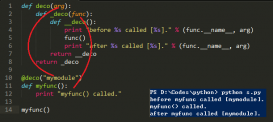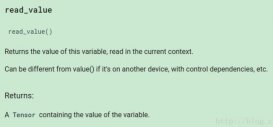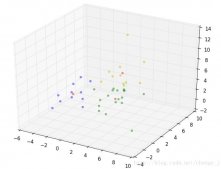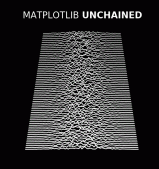本文实例讲述了Python实现Windows上气泡提醒效果的方法。分享给大家供大家参考。具体实现方法如下:
|
1
2
3
4
5
6
7
8
9
10
11
12
13
14
15
16
17
18
19
20
21
22
23
24
25
26
27
28
29
30
31
32
33
34
35
36
37
38
39
40
41
42
43
44
45
46
47
48
49
50
51
52
53
54
55
56
57
58
59
60
61
62
63
64
65
66
67
68
69
70
71
72
73
74
75
76
77
78
79
80
81
82
83
84
85
86
87
88
89
90
91
92
93
94
95
96
97
98
99
100
101
102
103
104
105
106
107
108
109
110
111
112
113
114
|
# -*- encoding: gbk -*- import sys import os import struct import time import win32con from win32api import *# Try and use XP features, so we get alpha-blending etc. try: from winxpgui import *except ImportError: from win32gui import *class PyNOTIFYICONDATA: _struct_format = ( "I" # DWORD cbSize; 结构大小(字节) "I" # HWND hWnd; 处理消息的窗口的句柄 "I" # UINT uID; 唯一的标识符 "I" # UINT uFlags; "I" # UINT uCallbackMessage; 处理消息的窗口接收的消息 "I" # HICON hIcon; 托盘图标句柄 "128s" # TCHAR szTip[128]; 提示文本 "I" # DWORD dwState; 托盘图标状态 "I" # DWORD dwStateMask; 状态掩码 "256s" # TCHAR szInfo[256]; 气泡提示文本 "I" # union { # UINT uTimeout; 气球提示消失时间(毫秒) # UINT uVersion; 版本(0 for V4, 3 for V5) # } DUMMYUNIONNAME; "64s" # TCHAR szInfoTitle[64]; 气球提示标题 "I" # DWORD dwInfoFlags; 气球提示图标 ) _struct = struct.Struct(_struct_format) hWnd = 0 uID = 0 uFlags = 0 uCallbackMessage = 0 hIcon = 0 szTip = '' dwState = 0 dwStateMask = 0 szInfo = '' uTimeoutOrVersion = 0 szInfoTitle = '' dwInfoFlags = 0 def pack(self): return self._struct.pack( self._struct.size, self.hWnd, self.uID, self.uFlags, self.uCallbackMessage, self.hIcon, self.szTip, self.dwState, self.dwStateMask, self.szInfo, self.uTimeoutOrVersion, self.szInfoTitle, self.dwInfoFlags ) def __setattr__(self, name, value): # avoid wrong field names if not hasattr(self, name): raise NameError, name self.__dict__[name] = value class MainWindow: def __init__(self, title, msg, duration=3): # Register the Window class. wc = WNDCLASS() hinst = wc.hInstance = GetModuleHandle(None) wc.lpszClassName = "PythonTaskbarDemo" # 字符串只要有值即可,下面3处也一样 wc.lpfnWndProc = { win32con.WM_DESTROY: self.OnDestroy } # could also specify a wndproc. classAtom = RegisterClass(wc) # Create the Window. style = win32con.WS_OVERLAPPED | win32con.WS_SYSMENU self.hwnd = CreateWindow(classAtom, "Taskbar Demo", style, 0, 0, win32con.CW_USEDEFAULT, win32con.CW_USEDEFAULT, 0, 0, hinst, None ) UpdateWindow(self.hwnd) iconPathName = os.path.abspath(os.path.join(sys.prefix, "pyc.ico")) icon_flags = win32con.LR_LOADFROMFILE | win32con.LR_DEFAULTSIZE try: hicon = LoadImage(hinst, iconPathName, win32con.IMAGE_ICON, 0, 0, icon_flags) except: hicon = LoadIcon(0, win32con.IDI_APPLICATION) flags = NIF_ICON | NIF_MESSAGE | NIF_TIP nid = (self.hwnd, 0, flags, win32con.WM_USER + 20, hicon, "Balloon tooltip demo") Shell_NotifyIcon(NIM_ADD, nid) self.show_balloon(title, msg) time.sleep(duration) DestroyWindow(self.hwnd) def show_balloon(self, title, msg): # For this message I can't use the win32gui structure because # it doesn't declare the new, required fields nid = PyNOTIFYICONDATA() nid.hWnd = self.hwnd nid.uFlags = NIF_INFO # type of balloon and text are random nid.dwInfoFlags = NIIF_INFO nid.szInfo = msg[:64] nid.szInfoTitle = title[:256] # Call the Windows function, not the wrapped one from ctypes import windll Shell_NotifyIcon = windll.shell32.Shell_NotifyIconA Shell_NotifyIcon(NIM_MODIFY, nid.pack()) def OnDestroy(self, hwnd, msg, wparam, lparam): nid = (self.hwnd, 0) Shell_NotifyIcon(NIM_DELETE, nid) PostQuitMessage(0) # Terminate the app. if __name__=='__main__': MainWindow("您有一条短消息", "您该睡觉了") |
希望本文所述对大家的Python程序设计有所帮助。












